 W
WIlie Antonescu was a major general of the Romanian Armed Forces during World War II.
 W
WToma Arnăuțoiu was a Romanian officer who led a small group of anti-communist resistance fighters in the Southern Carpathian foothills between 1949 and 1958. It ended up as one of the most enduring resistance groups in Eastern Europe.
 W
WGheorghe Arsenescu was a Romanian Army officer who led an anti-communist resistance movement in post-World War II Romania.
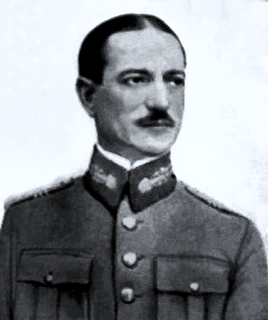 W
WVasile Atanasiu was a Romanian general in World War II.
 W
WGheorghe Avramescu was a Romanian Lieutenant General during World War II. In 1945, he was arrested by the NKVD on the Slovakian front and died in custody the next day.
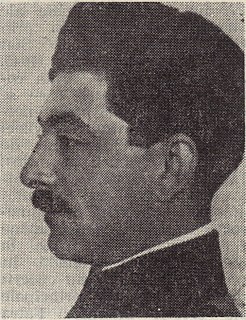 W
WConstantion Bădescu was a Romanian brigadier-general during World War II.
 W
WEmanoil Bârzotescu was a Romanian major general during World War II.
 W
WAlexandru Bassarab, or Basarab, was a Romanian painter, engraver, and fascist politician. Earning his reputation for his pioneering work in linocut and woodcut, he explored neotraditionalism, Romanian nationalism, and Romanian folklore, and was ultimately drawn into politics with the Iron Guard. He helped steer several art groups associated or integrated with the Guard, contributed to its fascist propaganda, and briefly served in the Assembly of Deputies. He survived the clampdown of the late 1930s, returning to apolitical work with Grupul Grafic, and exploring the legacy of Byzantine art.
 W
WMihail Cămărașu was a Romanian lieutenant-general during World War II.
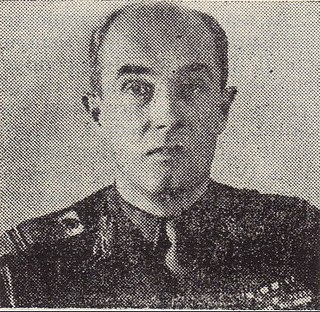 W
WNicolae Cambrea was a Romanian brigadier general during World War II.
 W
WDumitru Carlaonț was a Romanian major-general during World War II, who is known for being imprisoned and acquitted for war crimes three times. He was the younger brother of General Ioan Carlaonț.
 W
WMarin Ceaușu was a Romanian brigadier-general during World War II.
 W
WPlaton Chirnoagă was a Romanian brigadier-general during World War II.
 W
WHenri Cihoski was a Romanian lieutenant-general during World War I, and Minister of War from 1928 to 1930.
 W
WNicolae Ciupercă was a Romanian general, born in Râmnicu Sărat. He served during World War I and World War II under the Command of Alexandru Averescu and then Ion Antonescu, but would retire from a military life in 1941 over strategy disagreements with Antonescu. He also served as Minister of National Defense in 1938–1939.
 W
WConstantin Constantinescu-Claps was a Romanian general during World War II, in command of the Romanian Fourth Army at the Battle of Stalingrad.
 W
WNicolae Costescu was a Romanian brigadier general during World War II.
 W
WIlie Crețulescu was a Romanian major-general during World War II.
 W
WMajor Nicolae Dabija, knight of Order of Michael the Brave, was an officer of the Romanian Royal Army and a member of the anticommunist armed resistance in Romania. He was the leader of the "National Defense Front–The Haiduc Corps" resistance group.
 W
WDumitru Dămăceanu was a Romanian army officer in World War II, later promoted to brigadier-general, who played a predominant role in the royal coup of August 23, 1944.
 W
WNicolae I. Dăscălescu was a Romanian general during World War II.
 W
WAlexandru A. Dobriceanu was an officer in the Romanian Army who fought in both World War I and World War II, and rose to the rank of major general afterwards.
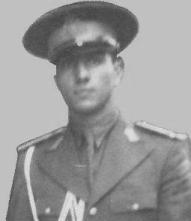 W
WEugen Dobrogeanu was a Romanian officer, the first bibliographer of the Romanian criminology and active participant in Operation Autonomous.
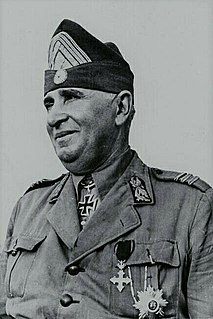 W
WCorneliu Dragalina was a Romanian lieutenant general during World War II.
 W
WMarie Ana Aurelia (Mariana) Drăgescu was a Romanian military aviator during World War II. She was the last surviving member of the White Squadron, a team of female aviators who flew medical aircraft during World War II. Romania was the only country in the world to allow women to pilot medical missions during the war.
 W
WIoan Dumitrache was a Romanian major general during World War II, in command of the 2nd Mountain Division. His troops were recognized as the elite troops of the Romanian Army throughout the campaign on the Eastern Front. He was a recipient of the Knight's Cross of the Iron Cross of Nazi Germany, awarded to him for capturing Nalchik on November 2, 1942.
 W
WPetre Dumitrescu was a Romanian general during World War II who led the Romanian Third Army on its campaign against the Red Army in the Eastern Front.
 W
WCălin Gruia was a Romanian writer, author mainly of children's fairy tales and poems.
 W
WRadu Gyr was a Romanian poet, essayist, playwright and journalist.
 W
WEmanoil Ionescu was a Romanian General during World War II and commander of the Romanian Air Force's Corpul I Aerian.
 W
WMihail Lascăr was a Romanian General during World War II and Romania's Minister of Defense from 1946 to 1947.
 W
WHoria Macellariu was a Romanian rear admiral, commander of the Royal Romanian Navy's Black Sea Fleet during the Second World War.
 W
WNicolae Macici was a Romanian lieutenant general during World War II, when he commanded the Romanian First Army, first on the side of the Axis (1941–1944) and then on the side of the Allies (1944–1945). Convicted in 1945 by the Bucharest People's Tribunal as a war criminal for his role in the Odessa massacre, he died at Aiud Prison five years later.
 W
WGheorghe Manoliu was a Romanian major general during World War II.
 W
WMichael I was the last King of Romania, reigning from 20 July 1927 to 8 June 1930 and again from 6 September 1940 until his forced abdication on 30 December 1947.
 W
WGheorghe Mihail was a Romanian career army officer.
 W
WIon Mihalache was a Romanian agrarian politician, the founder and leader of the Peasants' Party (PȚ) and a main figure of its successor, the National Peasants' Party (PNȚ).
 W
WLeonard Mociulschi was a Romanian Major General of Polish origin during World War II.
 W
WConstantin D. Nicolescu was a Romanian career army officer, and Minister of Defense in July–September 1940.
 W
WPaul Niculescu-Mizil was a Romanian communist politician. Joining the Romanian Communist Party due to his background and intellectual aspirations, he was prominent in the agitprop department during Gheorghe Gheorghiu-Dej's rule. Under Nicolae Ceaușescu, he went from handling foreign affairs in the late 1960s to holding ministerial posts in the 1970s to a marginal position in the 1980s. After the regime's collapse in 1989, he spent time in prison before emerging as a vocal defender of the system he had served.
 W
WGherman V. Pântea was a Bessarabian-born soldier, civil servant and political figure, active in the Russian Empire and Romania. As an officer of the Imperial Russian Army during most of World War I, he helped organize the committees of Bessarabian soldiers, oscillating between loyalty to the Russian Provisional Government and the cause of Bessarabian emancipation. Pântea was subsequently Military Director of the Moldavian Democratic Republic, answering to President Ion Inculeț. He personally created a Bessarabian defense force, tasked with combating Bolshevik subversion and Russian intimidation, but also braced for defeat after the October Revolution.
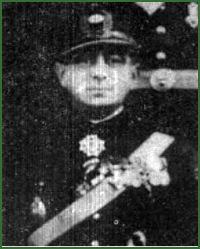 W
WConstantin Petrovicescu was a Romanian soldier and politician, who served as Interior Minister from September 14, 1940 to January 21, 1941 during the National Legionary State.
 W
WIoan Mihail Racoviță was a Romanian general during World War II, and Minister of Defense in the aftermath of King Michael's Coup of August 1944.
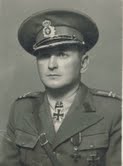 W
WGheorghe Răscănescu was a Romanian officer during World War II. He was born in Crăcăoani, Neamţ County. He was a recipient of the Knight's Cross of the Iron Cross of Nazi Germany for his actions at Stalingrad. Sentenced to 10 years for “trying to overthrow the political order”; released from prison in 1962.
 W
WNadia (Nadejda) Russo-Bossie was a Romanian military aviator during World War II. She was a member of the White Squadron, a team of female aviators who flew medical aircraft during World War II. Romania was the only country in the world to allow women to pilot medical missions during the War.
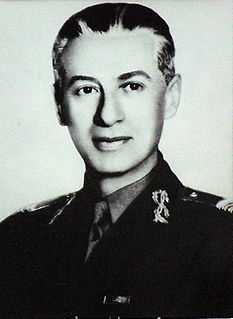 W
WConstantin Sănătescu was a Romanian general and statesman who served as the 44th Prime Minister of Romania after the 23 August 1944 coup, through which Romania left the Axis powers and joined the Allies.
 W
WIlie Șteflea was a Romanian General during World War II and Chief of the Romanian General Staff between 20 January 1942 and 23 August 1944.
 W
WPăstorel Teodoreanu, or just Păstorel, was a Romanian humorist, poet and gastronome, the brother of novelist Ionel Teodoreanu and brother in law of writer Ștefana Velisar Teodoreanu. He worked in many genres, but is best remembered for his parody texts and his epigrams, and less so for his Symbolist verse. His roots planted in the regional culture of Western Moldavia, which became his main source of literary inspiration, Păstorel was at once an opinionated columnist, famous wine-drinking bohemian, and decorated war hero. He worked with the influential literary magazines of the 1920s, moving between Gândirea and Viața Românească, and cultivated complex relationships with literary opinion-makers such as George Călinescu.
 W
WCorneliu Teodorini was a Romanian general during World War II. He was a recipient of the Knight's Cross of the Iron Cross with Oak Leaves and the Order of Michael the Brave, 2nd Class.
 W
WGheza or Géza Vida, also known as Grigore, was a Romanian–Hungarian sculptor, engraver, industrial worker and communist militant, one of the most renowned artists of Maramureș region. The descendant of ethnic Romanian and Slovak miners, he was born in the Hungarian segment of Austria-Hungary. Raised by his mother after his father's death in World War I, he received financial support from local benefactors, who cultivated his artistic skill, particularly as a woodcarver. A citizen of Romania after the union of 1918, he was forced to drop out of school by economic circumstances, and worked for years in various industries and businesses, while also discovering his passion for beekeeping and gardening. He was drawn into far-left politics during the Great Depression, when he came to be influenced by radical artists such as Alexandru Ziffer, Aurel Popp, Vasile Kazar and Iosif Klein, who also introduced him to avant-garde experimentation. Vida was co-opted into the Union of Communist Youth and subsequently the Communist Party, producing propaganda art for both; this activity led to his temporary arrest in 1932 and 1933. A labor organizer, he helped establish the Artists' Trade Union and its branch in Baia Mare.